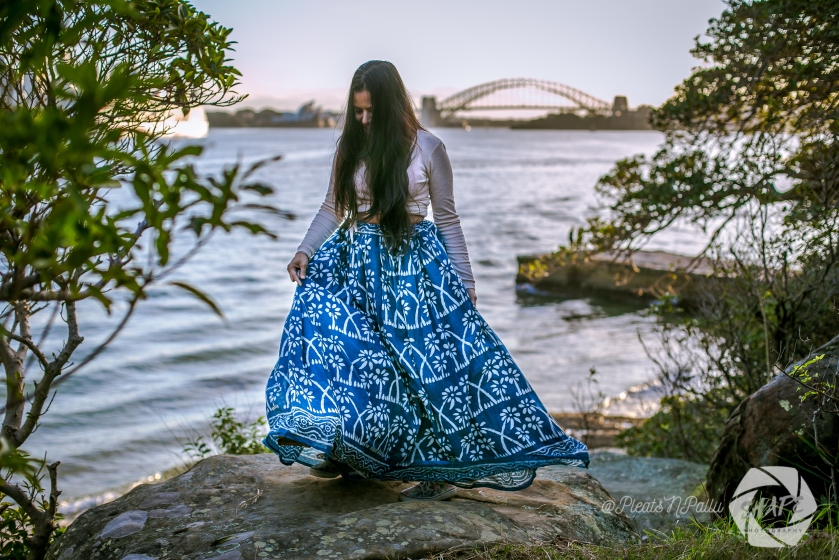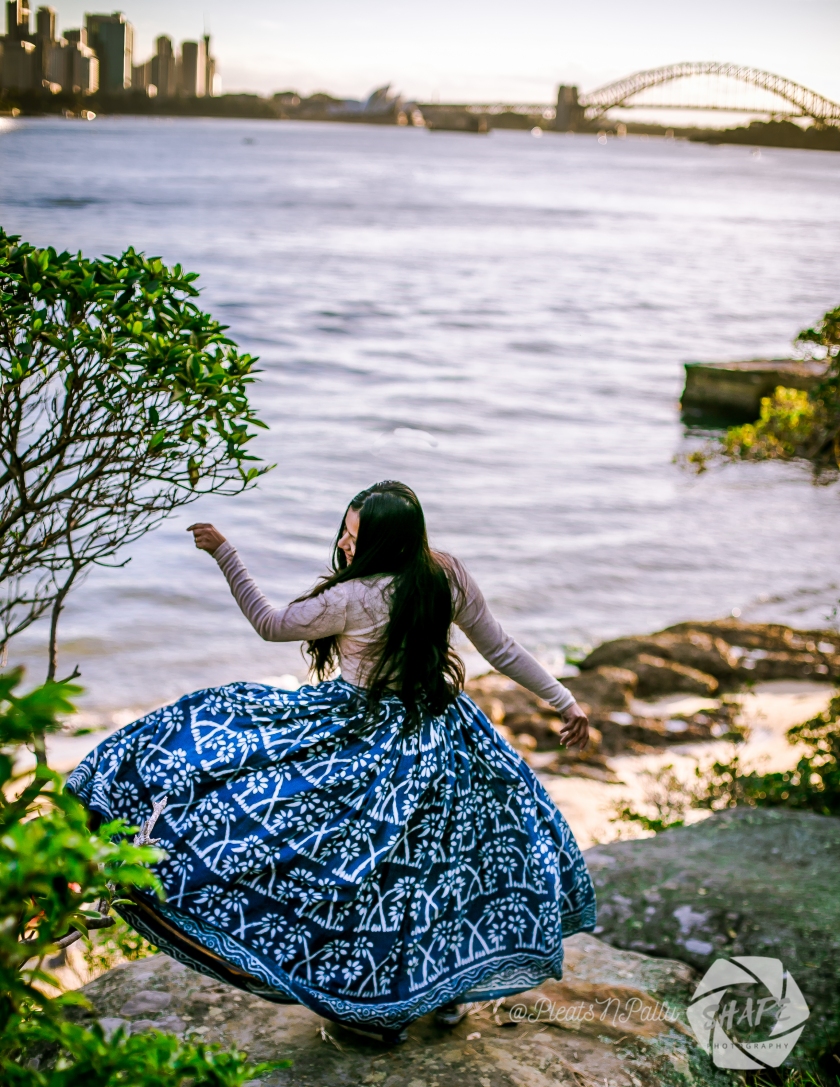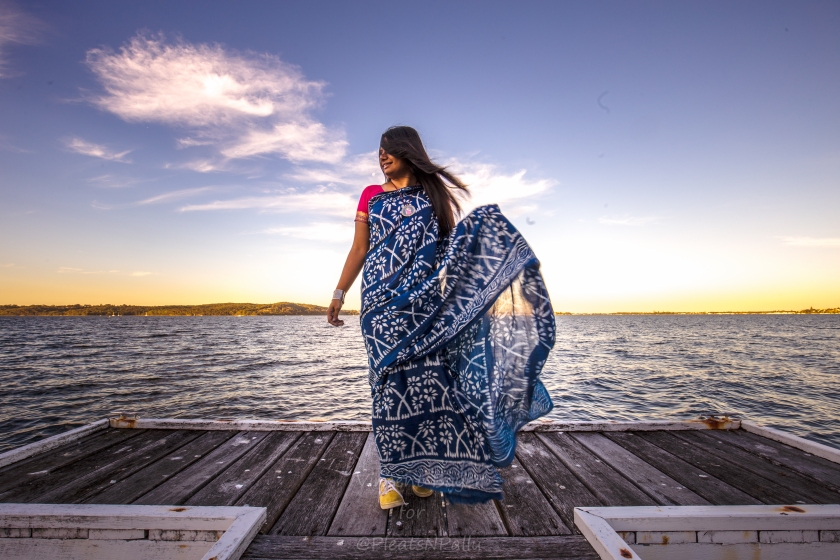A mental health crusader, an inspiring speaker and a saree enthusiast, Poppy Jaman talks to Pleats N Pallu about her love for the six yards of unstitched fabric..
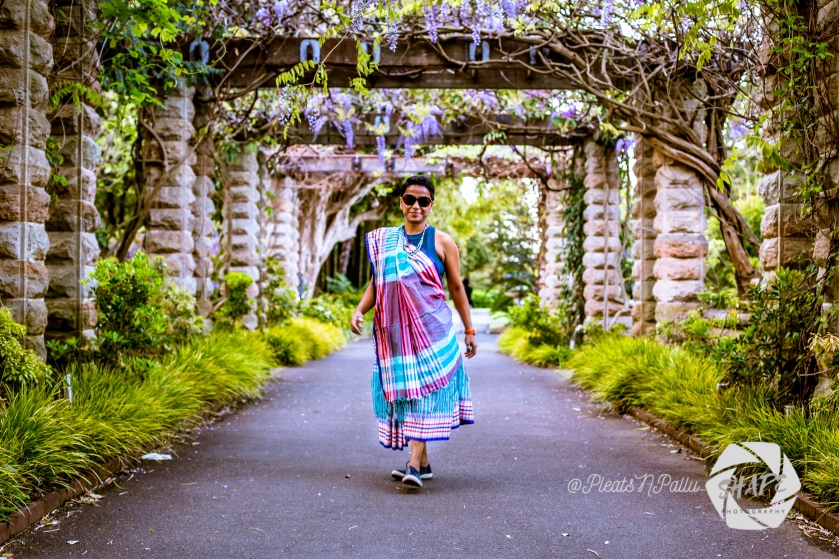
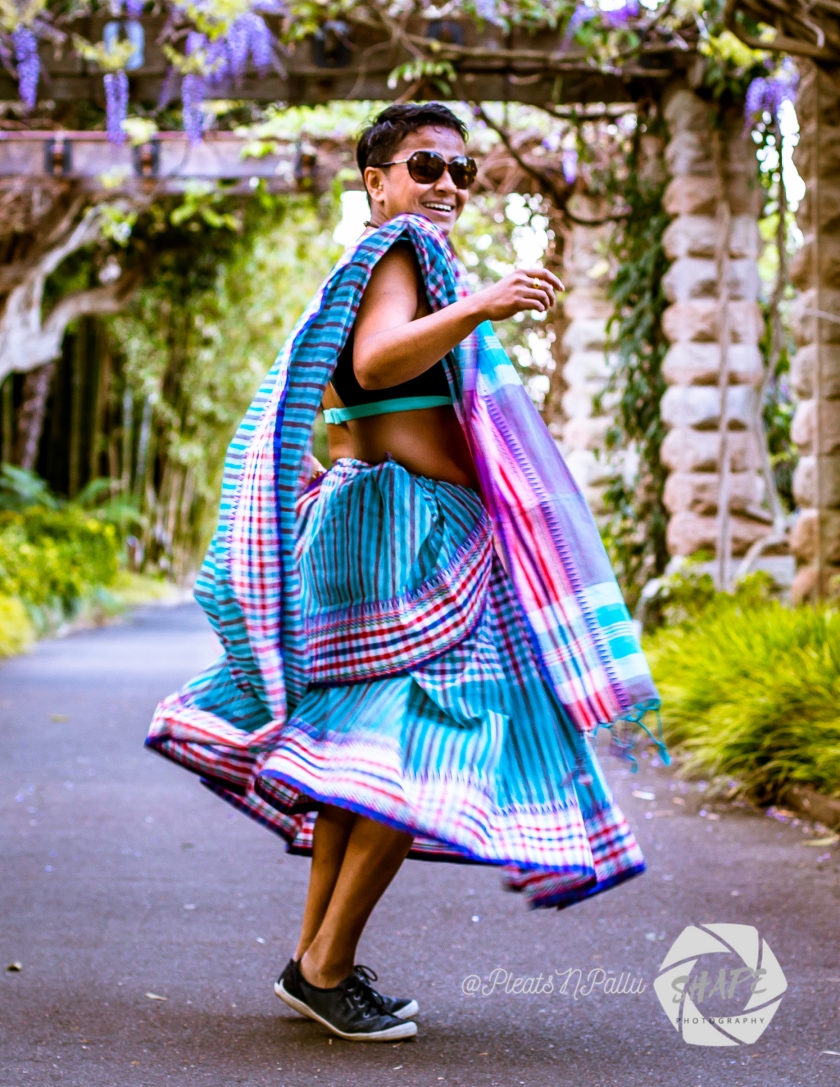
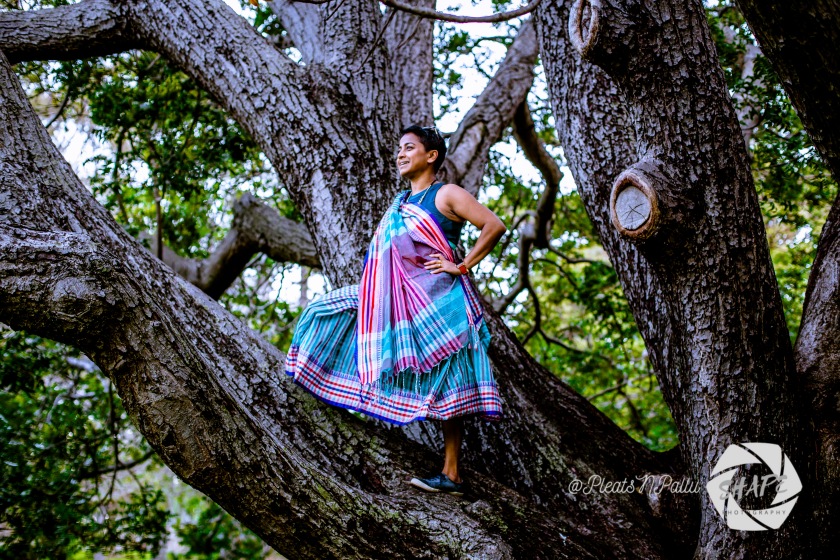
Photos: Vincent Boyer (Say hi on instagram @shape.photos)
Poppy is known for working indefategably to challenge the perceptions of mental ill health and for ensuring that mental health is a high priority for companies. In 2018 she was awarded with an Order of the British Empire in recognition of her services to people with mental health issues.
When I met her, it hadn’t been enough time for her to have shed off the awful jet lag that accompanies journeys from Europe to Australia but she was a bundle of energy and positivity, practically buzzing with joy and a certain light that many spend a lifetime trying to cultivate.
Her instagram handle is a celebration of life’s tiny moments, her innumerable travels and the versatility of the unstitched fabric. Sarees are a subject she is tremendously passionate about, she says, “My first memories of the saree are all of my mum wearing various weaves, that’s all she wore and my favourite were her Banarasi ones.”
She wore her first saree at her baby cousin’s birthday soiree, “I can’t remember what it was but I do remember wearing it with a linen tailored jacket with sleeves rolled up and shoulder pads 80’s style!”
In my opinion it is a look that is just begging to be re-created.
Poppy’s effervescent personality practically sparkles when she is talking about the ways in which she makes the saree her own. “I would always play with dupatta’s as a child. I’d wrap them in saree style and struggle to walk,” she reminisces.
She states that she does not find it hard to keep her saree love going in spite of living outside of the sub-continent. Poppy just celebrates the beauty of the unstitched drape by wearing sarees at every occasion possible and by talking about them at every chance she gets.
I am officially envious when she reveals that she has a room dedicated to sarees in her home, “It’s beautiful, the display of colours always cheers me up and never fails to inspire me.”
She says that wearing a saree feels different at different times, “Sometimes I feel ultra glamorous and then there are those pyjama-like sarees that are beyond comforting.”
Her favourite saree wearing inspirations are Rekha and her mum. To Poppy, the unstitched fabric is more than just a garment, it is about her identity, “I love the traditional Bengali drapes that I saw my grandmothers wear as that makes feel connected to my roots.”
“I also love the drape that I’ve seen women working in the paddy fields in Bangladesh wear, when I wear my saree in that style I feel productive and ready to take on the world.”
The one tip Poppy would give a newbie saree wearer is to try wearing styles without the petticoat, “It is very liberating!”
The saree she is wearing in the photos is a length of coarsely woven cotton bought back from Bangladesh by Poppy’s brother. “It’s still fully starched, so it looks big and bold. Which I love.”
“I wore it for the first time in Sydney especially for you. Little did I know you’d have me climbing trees,” she exclaims with a twinkle in her eyes.
Poppy believes that incorporating the saree in to one’s life and travel is easy, she says, “I just pack one every time I go anywhere. Dropping the petticoat has boosted my confidence and made the saree a more agile item I can sling on anytime I like, without the fuss of matching blouses and petticoats.”
Her favourite kind of sarees are soft cottons that have become wispy with age and wear. She says, “I love the way they wrap around me and make me feel completely comfortable. And I have a special place in my heart for jamdanis, the signature saree of my birth country.”
You can find her @poppyjaman on both twitter and instagram. For more such chats with other ladies with impeccable style please click here and here.
